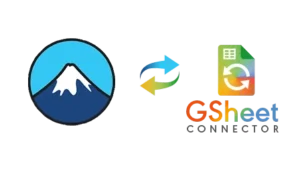For more than a decade, fintech has transformed how digital assets, payments, and data flows are monetized online. But as markets evolve, a new opportunity is emerging — one that extends beyond screens and into the physical world.
The rise of Digital Out-of-Home (DOOH) advertising is turning public spaces into dynamic, data-driven ecosystems. Powered by the same logic that underpins financial markets, automation, analytics, and algorithmic optimization, DOOH is quickly becoming a fintech frontier in its own right.
At the center of this transformation is a new generation of infrastructure: the DOOH ad server.
1. From Static Billboards to Smart Marketplaces
The traditional outdoor advertising model was slow, manual, and fragmented. Changing a billboard took days or weeks; performance data was anecdotal at best. Today’s DOOH networks operate more like automated exchanges than media channels.
A DOOH ad server is the core system that manages these exchanges. It delivers creative assets to digital screens, measures performance in real time, and optimizes placement based on data inputs such as location, audience density, time, or even weather.
Every impression becomes a micro-transaction, a trade in visibility and engagement. And just like in programmatic finance, milliseconds matter.
2. Ad Tech Meets Fintech Logic
What makes DOOH infrastructure uniquely aligned with fintech is its underlying logic: continuous automation and dynamic pricing.
When a campaign is launched through a DOOH ad server, algorithms determine which screen, at which moment, yields the best value. These systems can adjust bids and placements automatically, based on demand curves, local events, or predictive analytics.
This mirrors mechanisms found in high-frequency trading and algorithmic asset management. The same principles that move digital capital now move digital attention.
Moreover, the financialization of outdoor inventory, the ability to price and trade ad space programmatically, opens the door to entirely new revenue models. Agencies can “trade” impressions, investors can hedge exposure to seasonal ad demand, and local media networks can sell audience reach like commodities.
3. Data as the Currency of Place
In the DOOH ecosystem, data replaces geography as the key source of value.
Smart screens collect anonymized metrics on audience exposure, dwell time, and engagement triggers. Combined with external data feeds, traffic density, weather, and event calendars, this information forms the equivalent of a market data feed in finance.
The DOOH ad server becomes the exchange engine: analyzing inputs, matching demand to supply, and executing transactions in real time. Each impression delivered is a data-backed, measurable outcome — turning the public environment into a quantifiable asset class.
For fintech innovators, this convergence represents more than just ad-tech growth. It’s a model for monetizing real-world behavior using automated financial logic.
4. Compliance, Transparency, and Trust
As the DOOH market scales, regulatory and ethical oversight become critical. Data privacy rules such as GDPR and the UK’s ICO guidelines impose strict limitations on how audience data can be collected and processed.
Modern ad servers address this by building transparency directly into the system. They anonymize all audience signals, use aggregated location data, and allow publishers to audit delivery logs, much like financial firms perform transaction reconciliations.
This alignment with fintech-grade compliance reinforces trust, enabling brands and municipalities to adopt DOOH without compromising security or ethics.
For investors, it also signals market maturity: a shift from experimentation to standardized, auditable systems that attract institutional participation.
5. Monetizing the Physical Web
What began as a marketing innovation is now evolving into an economic infrastructure. Cities, retailers, and transport hubs are all experimenting with DOOH networks to generate revenue and enhance public engagement.
In London, digital billboards on major roads dynamically adjust content based on traffic flow. In New York, transit authorities are partnering with tech firms to turn subway stations into smart hubs for real-time messaging and commercial inventory.
Behind these deployments is the same foundational principle: automated monetization of space through intelligent infrastructure.
A DOOH ad server enables this by providing the software backbone, connecting advertisers, operators, and data sources into a seamless ecosystem that monetizes visibility while maintaining transparency.
6. The Next Wave of Fintech-Driven Media
As digital and physical worlds merge, DOOH represents a new investment narrative for fintech innovators. It’s an industry where data liquidity meets physical context, where every public surface can become both informative and economically active.
For fintech investors and technologists alike, understanding this space means recognizing a simple truth: the market for attention is no longer confined to the web. It’s everywhere, in streets, airports, retail centers, and stadiums, managed by the same programmatic precision that drives global finance.
And at its heart, powering that exchange, sits the DOOH ad server — quietly turning public space into programmable capital.



































